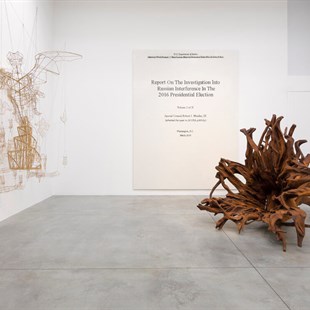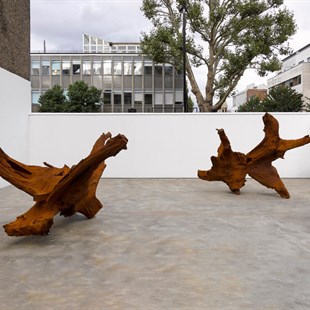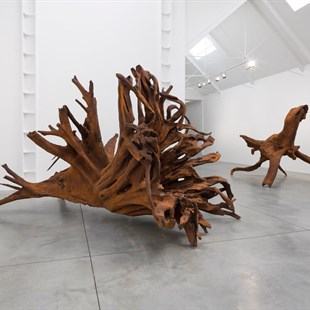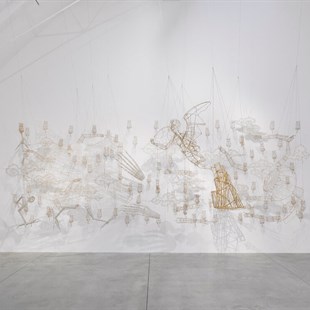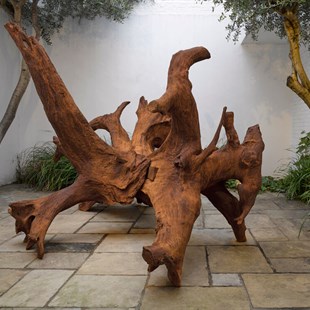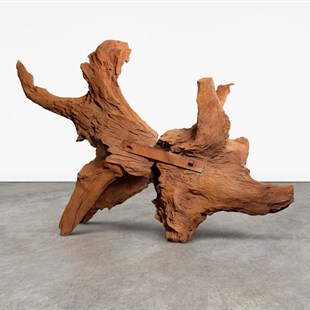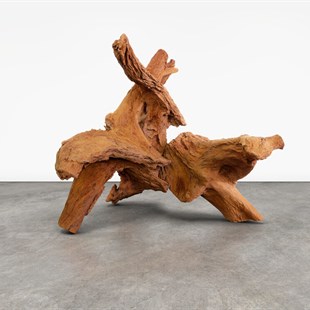
A major exhibition by Ai Weiwei this autumn features a new series of monumental sculptural works in iron, cast from giant tree roots sourced in Brazil during research and production for last year’s survey exhibition, Raiz, at the Oscar Niemeyer-designed OCA Pavilion in Ibirapuera Park, Sa?o Paulo.
Ai worked with local artisans and communities across Brazil, visiting Trancosoin the east to locate roots and trunks from the endangered pequi-vinagreiro tree, typically found in the Bahian rainforest. Elements of these ancient, rare tree roots have been painstakingly hand-cast using the traditional ‘lost wax’ technique and then conjoined at the artist’s studio in China to create new compositions and forms that reflect their Brazilian heritage, resembling great jungle beasts or fantastical creatures. Not born of nature but made by human hands, the works, themselves contorted by the surrounding landscape, represent a society uprooted by industrialisation and modernisation, illustrating how progress can often come at the expense of cultural and societal well-being.
Contrasting with these heavy, land-bound creatures is a number of floating figures, clouds and dream-like vignettes. Ai has been producing delicate sculptures from stretched silk over bamboo armatures for the past five years, employing a group of Chinese kite makers based in Weifang, a city in Shandong province. Purported to have been invented in China around 500 BC by a carpenter and a philosopher, the kite has held many functions throughout history from measuring distances or wind speed, to communication and military usage. Ai’s kites refer back to a mythological encyclopaedia of monsters and creatures known as Shan Hai Jing (the Classic of Mountains and Seas) that also pre-dated Christianity, which depicts fantastical hybrids of chimera, gorgons, unicorns, dragons and griffins. Alongside this bestiary, Ai has added personal and childhood symbols, as well as references back to his own works – Surveillance Camera and his one-fingered salutes, the Study of Perspective series – and those of his influences, including Marcel Duchamp and Vladimir Tatlin.
A book will be published on the occasion of the exhibition and is presented in collaboration with Ai’s Berlin gallery, neugerriemschneider.
About the exhibition
Ai Weiwei: Roots
Dates: 2 October–2 November 2019
Venue: Lisson Gallery
Courtesy of the artist and Lisson Gallery, for further information please visit www.lissongallery.com.


